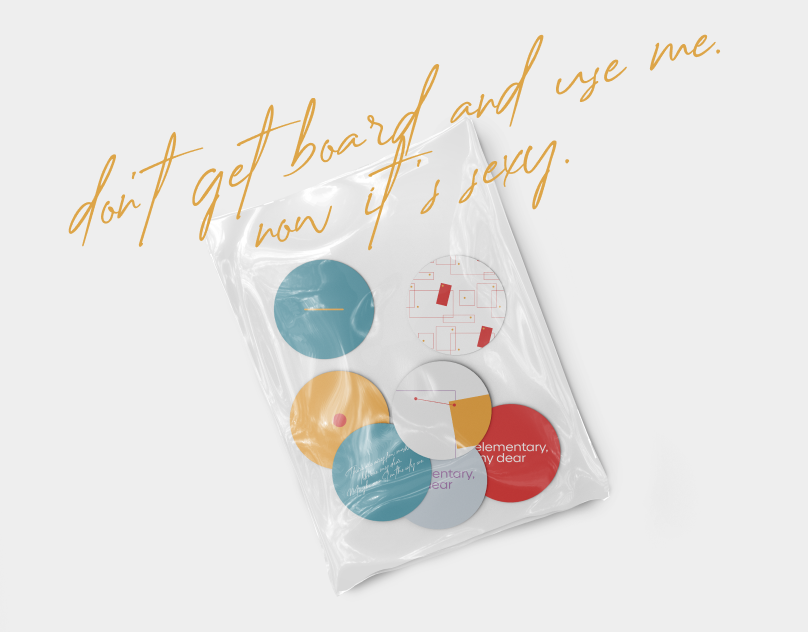

This idea came to fruition after looking into many different habits of the typical Target shopper. Based on primary and secondary research of Target and its shopping environment, I concluded that there are two basic types of shoppers; the wanderer, who doesn’t mind “getting lost” in a store and browsing what’s new or different, and the more efficient shopper, who likes getting in and out as quick as possible.
This smartphone application was designed with the “in and out” shopper in mind. Amongst these kinds of shoppers, almost everyone will tell you that they have a “list” of some sort in mind that they have prepared before they go to the store.
So why not enhance the capabilities of making a list? This app offers several incentives to stop simply filling in a notepad to prepare for the store.
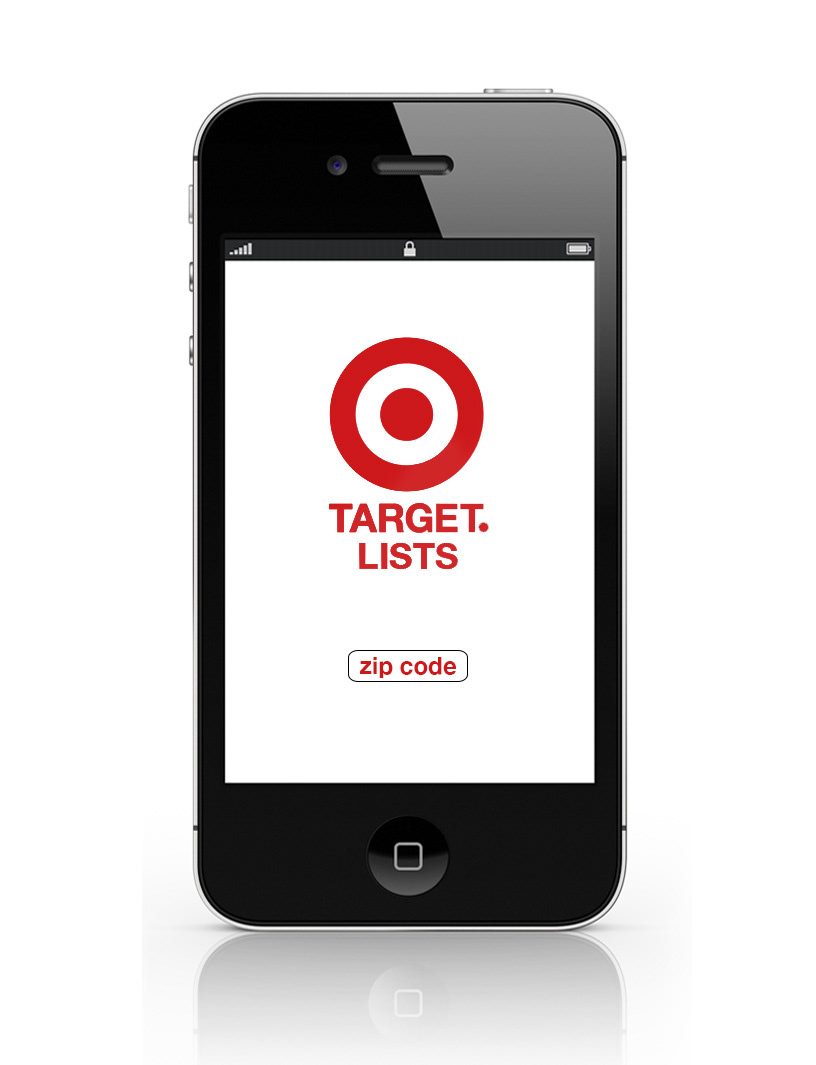
When you first open the app, you are prompted to enter your zip code. Once entered you will be able to move forward to the next page. This app bases its prices and in-store logistical information on the location chosen.
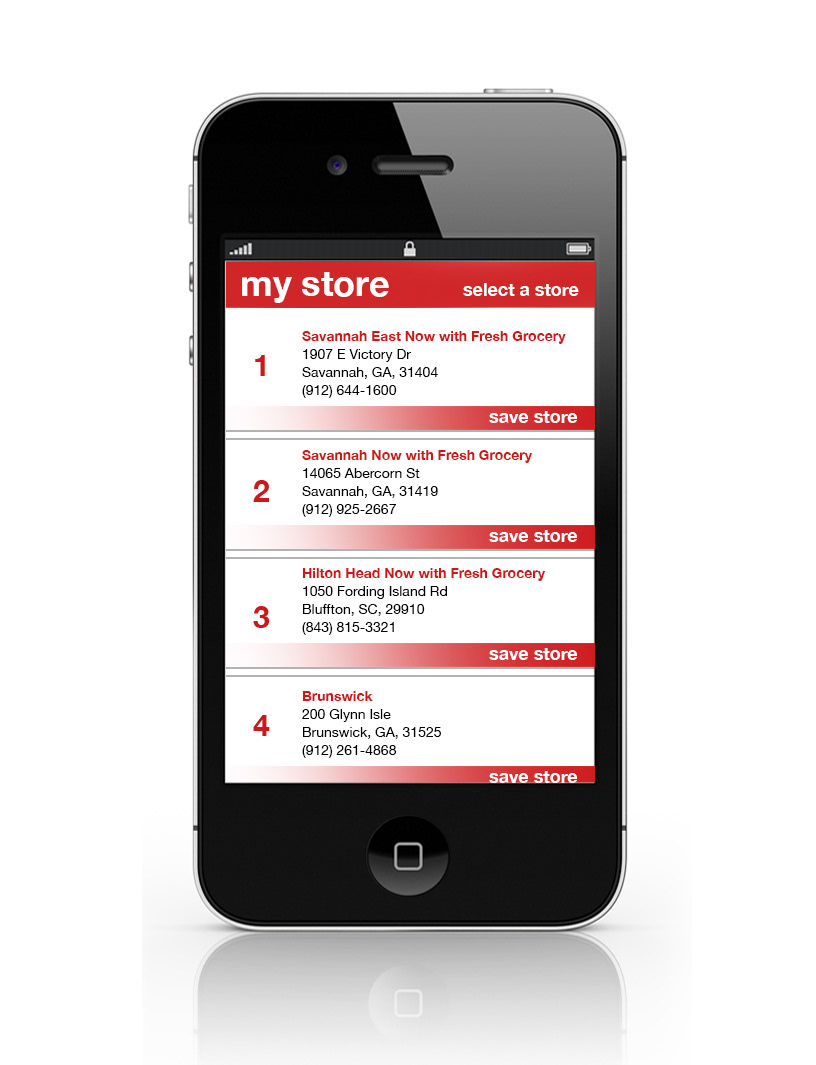
The next page gives the user the option browse through the closest Target locations, sorted by closest to farthest away. Then once the user has found their desired location, they can save it as their preferred store.
These first two pages will only be accessible after these interactions if the user wants to change their location. Otherwise when the app is opened, the default page is their list on the third screen.
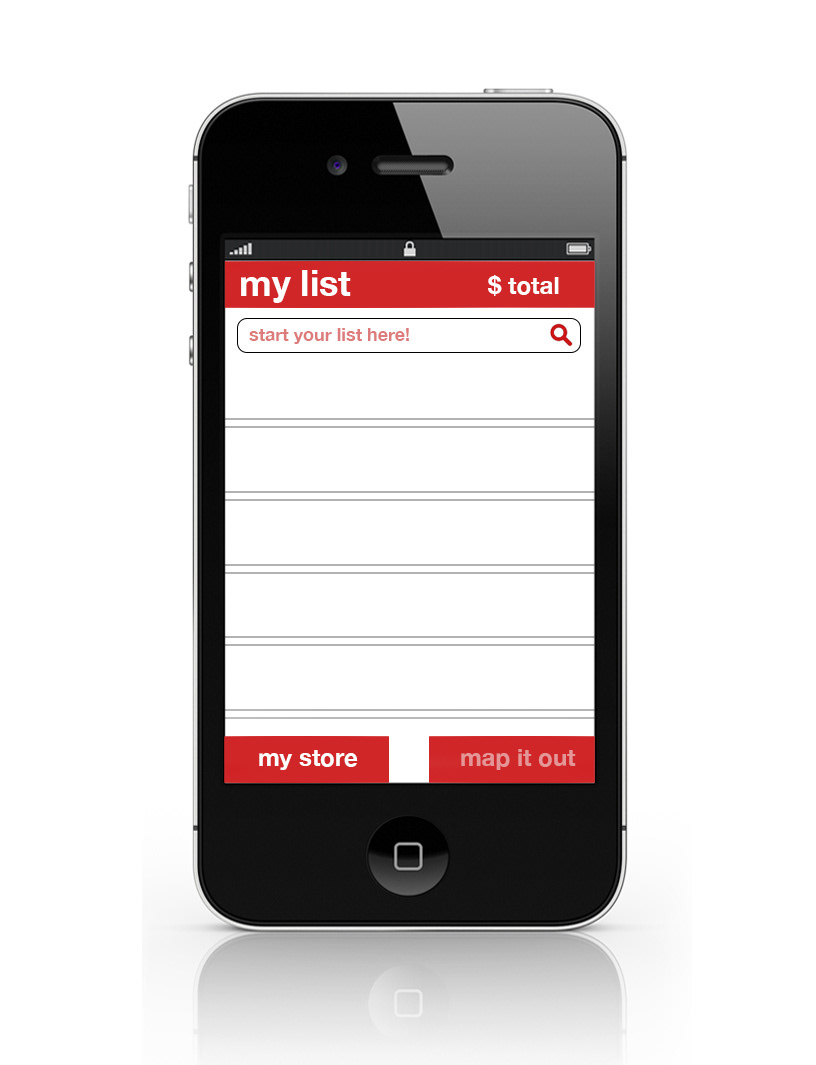
Here you will see a blank list that is simply waiting to be filled. To begin adding items you type into the search bar the basic type of item you are looking for.

For example, Toilet Paper was searched. This activates a dropdown menu that displays the most popular products associated with the term “toilet paper.” From here the user can add whichever brand of toilet paper they desired to their shopping list.

Once added to their list the items are simplified to their original search terms to still convey the idea of a basic shopping list. But with this, their price is displayed to the right of them, and the total of your shopping cart is displayed at the top in white with tax already included. This is to help the user shop efficiently and perhaps change their brand of choice per item to save some money. Once the list is complete, the user can select “map it out” at the base of the screen to generate an efficient route through their preferred store.
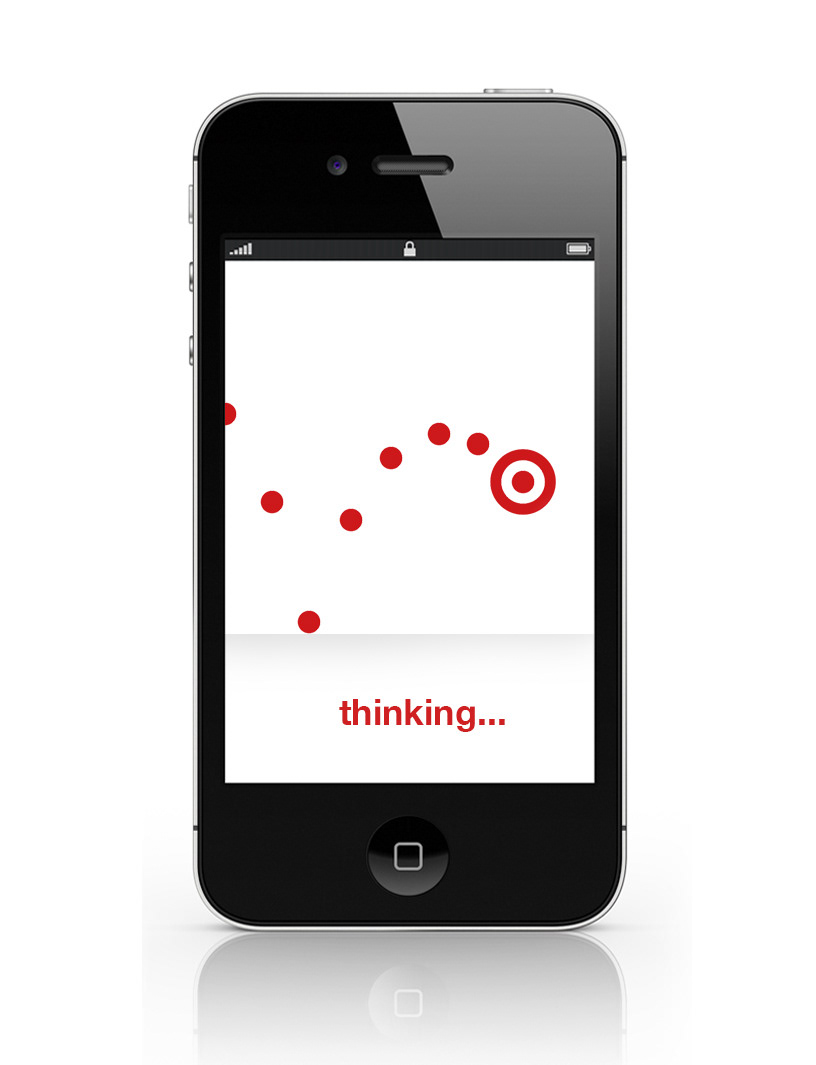
This screen is a simple visual of the target logo while the app generates a map for the user.
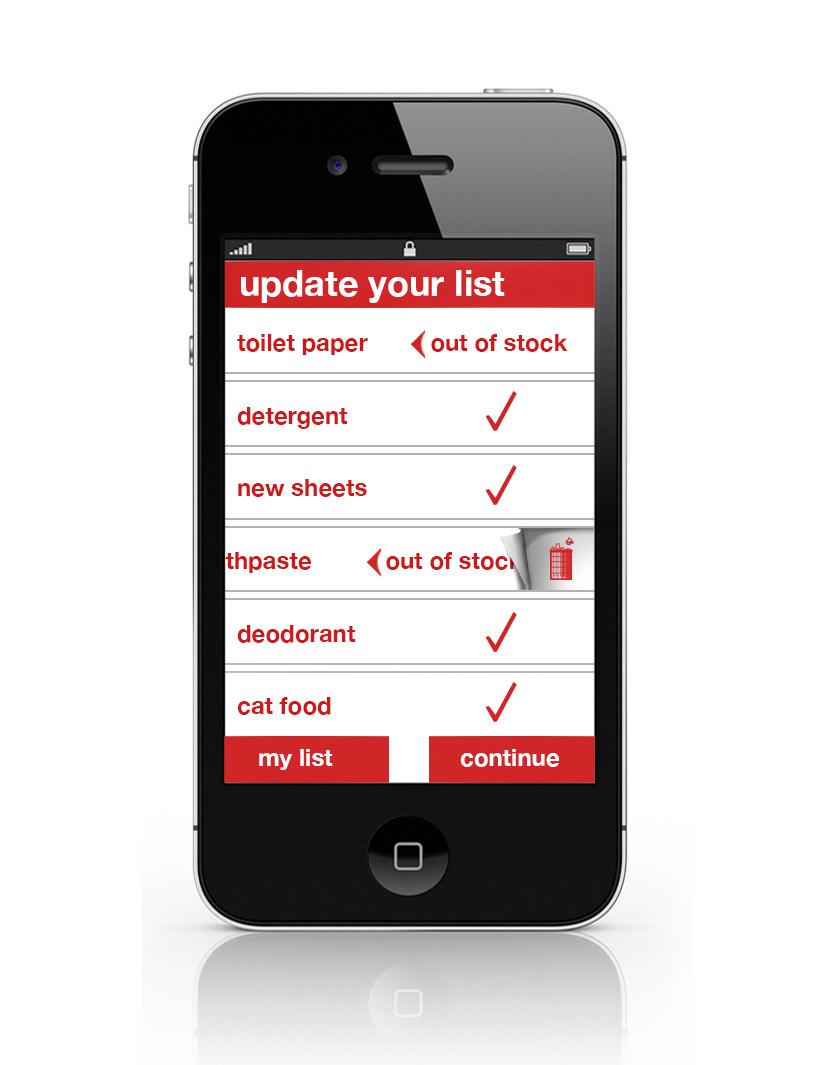
In case of the store being out of stock of certain list items, the app will alert the user that those items are not available and prompt them to remove them, or perhaps mark them as “find elsewhere.”

Now that the list is updated and the “out of stock” items are not included, the app generates a map through the store, marking each item stop with a target. At the top of the screen, the user is provided with a rough estimate of how much time they will need to spend in the store. The store’s sections are generally differentiated by slight color variations.

By selecting any of the individual targets on the original map, the user is provided with a closer view of their stop along with more details of the item including the specific aisle it is located on. From here the user can choose to clear their list once their trip through the store is complete.



